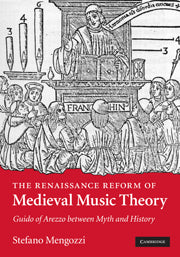
CAMBRIDGE UNIVERSITY PRESS - 521
Clearance: The Renaissance Reform of Medieval Music Theory
Publisher: Cambridge University Press
Clearance: The Renaissance Reform of Medieval Music Theory
Juilliard Store
144 West 66th Street
New York NY 10023
United States
Choose options
Clearance: The Renaissance Reform of Medieval Music Theory
Juilliard Store
144 West 66th Street
New York NY 10023
United States
Clearance: The Renaissance Reform of Medieval Music Theory
Juilliard Store
144 West 66th Street
New York NY 10023
United States
Modern scholars have often portrayed the method of hexachordal solmization - the sight-singing method introduced by the 11th-century monk Guido of Arezzo - as the diatonic foundation of early music. Stefano Mengozzi challenges this view by examining a representative sample of the primary sources of solmization theory from Guido of Arezzo to Gioseffo Zarlino. These texts show that six-syllable solmization was only an option for sight-singing that never imposed its operational 'sixth-ness' onto the diatonic system, already grounded on the seven pitch letters. It was primarily through the agency of several 'classicizing' theorists of the humanist era that the six syllables came to be mistakenly conceived as a fundamental diatonic structure - a 'hexachord' built from the 'tetrachord' of the Ancient Greeks. The book will be of particular interest to readers seeking to deepen their knowledge of medieval and Renaissance musical thought with an eye to major intellectual trends of the time.
